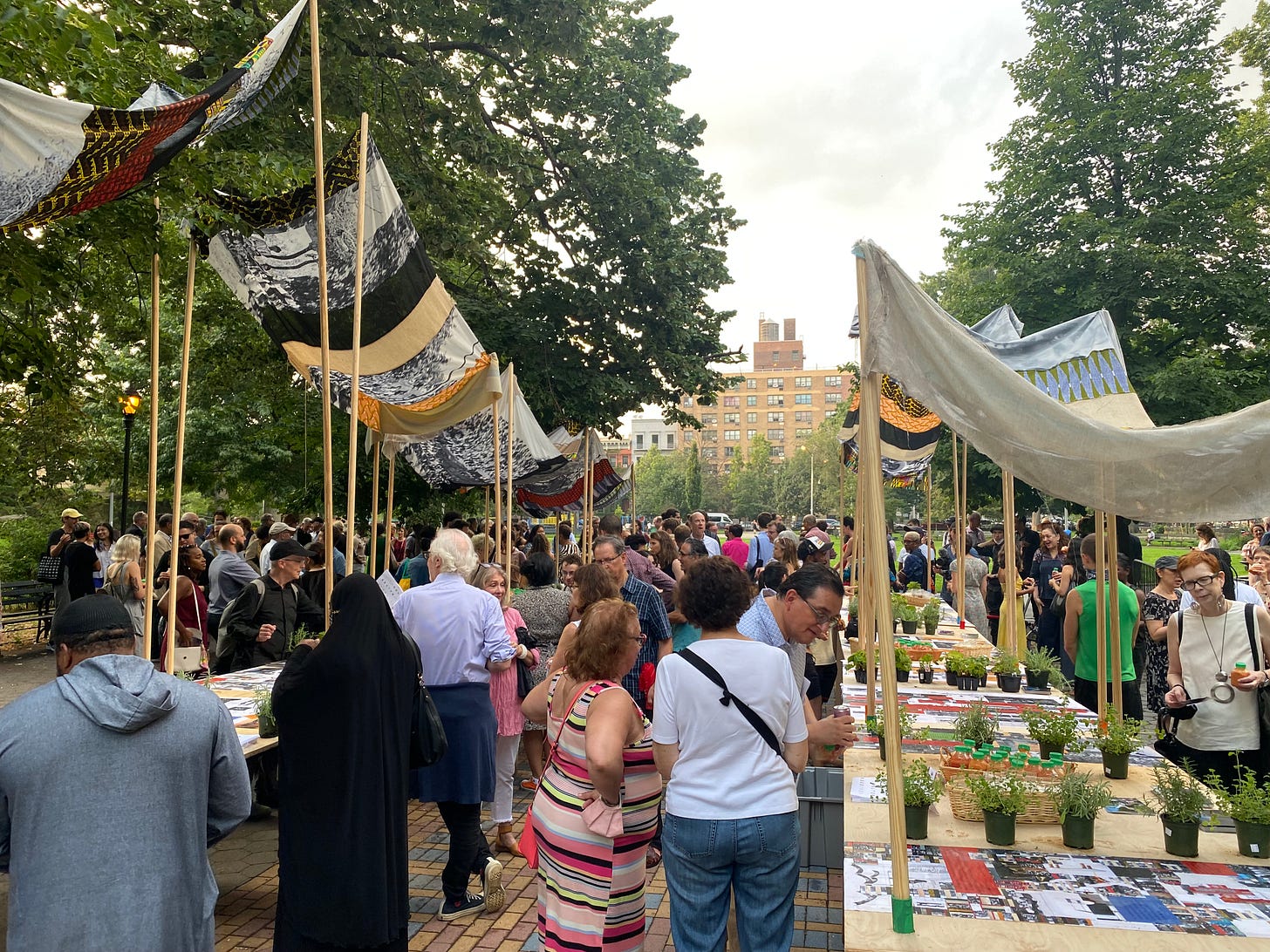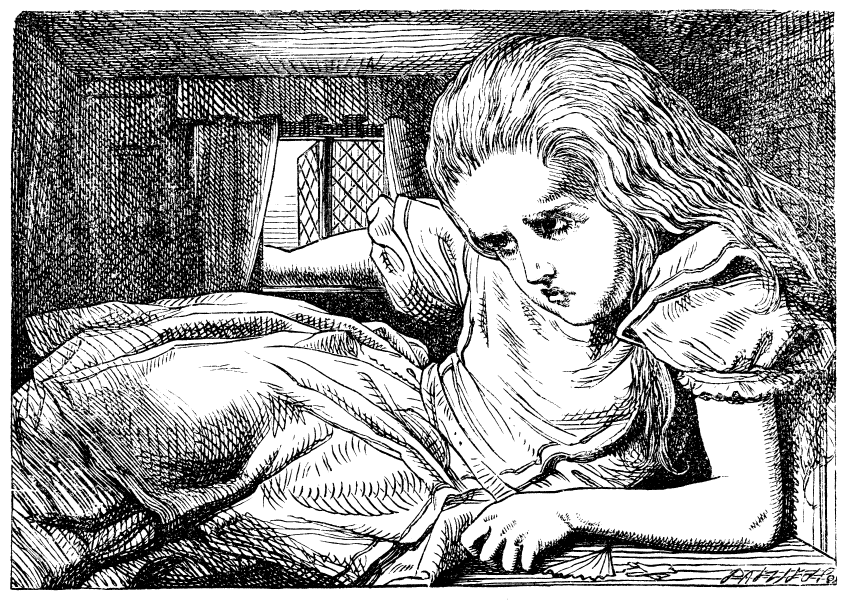S K Y L I N E | 29 | Outside Architecture, Outside Type, a Party Outside, Outside the Family
and more! The Week Ahead for July 26.
Welcome! If someone forwarded you SKYLINE, sign up here to receive it weekly.
Good morning! Nicholas Raap here again, serving up this week’s Skyline.
Last time I wrote to you, summer had just begun. Now we are certainly in the thick of it, literally, as the air is quite thick these days. On Wednesday, the Guardian reported air quality in Manhattan ranked the worst of any major city in the world that day, caused by smoke from wildfires raging on the West Coast. Certainly this smoke makes for more than a pseudo-cloudy day. A new study found that the burning of man-made structures—also known as buildings—adds toxicity to the continent-spanning plumes, as the various chemicals contained within contemporary building products are released. Considering almost 19,000 buildings burned in California’s 2018 Camp fire, this adds a new dimension to discussions around building emissions—which, including the construction sector, accounted for 38% of global carbon emissions in 2019.
Thinking about the impacts buildings have in the world forces us to consider things sometimes deemed outside traditional discourses of capital-A-architecture. The dispatches this week all prod in particular ways at those disciplinary and discursive boundaries, and ask us to look and think elsewhere, even if we don’t fully leave our architectural frame. AARON CAYER reports back on the third and final session of THE ARCHITECTURE LOBBY’s Architecture Beyond Capitalism School, ANNA TALLEY finds lessons for an alternative practice from type-designer MARIA DOREULI, A.L. HU attends an outdoor award celebration for WALTER HOOD in a park in Harlem, and I cover SOPHIE LEWIS, who examined the spatial dimensions of family abolition. Enjoy.
— Nicholas Raap
The Review reviews Andi Schmied’s Private Views!
The Review is pleased to announce the resumption of our in-person discussion series with NYRA REVIEWS A BOOK: PRIVATE VIEWS. The talk is scheduled for 7/27 (this Tuesday) at 7:30 PM and is hosted in collaboration with bookshop and espresso bar HEAD HI. Participating speakers include Andi Schmied, Jacob Reidel, & Lane Rick. It will be free, and there will be wine, so make your way over to 14 Clermont Avenue! Signed copies of Private Views will be available for purchase.
Please RSVP ahead of time through this link.
DISPATCHES
7/17 - Now we know our ABCs
On July 17, The Architecture Lobby’s Architecture Beyond Capitalism School (ABC School) held its final discussion focusing on Collectives and Commons, following two previous sessions on Capitalism and Labor, as part of its seven-week experimental curriculum.
Opening the event, sociologist MAGALI SARFATTI LARSON reconsidered her foundational work studying professions to argue that architecture may represent a collective, but not a strong community. Rather than focusing inward, Larson argued, new forms of outward practice are needed—with architects entering communities and working as part of them—in order to disrupt models of insular and asymmetrical patronage. Barcelona-based architect CRISTINA GAMBOA of Lacol described how her cooperative architectural practice does just that. Lacol was built upon the rich traditions of neighborhood cooperatives in Spain, and Gamboa described how the organization operates as fundamentally part of its community by seeking and responding to common goals and agreements. These shared values serve as the basis for cooperative design projects that reject privatization, such as cooperative housing, community-managed spaces, as well as shared resources and energy management infrastructure.
GARRETT JACOBS of Designing Justice + Designing Spaces and Open Architecture Collaborative argued that those who historically defined commons also defined who were not part of them. By working to bring people, institutions, resources, and organizations together with the common goal of reparative and restorative justice, he revealed how—through iteration—designed networks and designed spaces can reinvest in and support historically marginalized communities. In closing, KOFI BOONE of NC State University described how the history of Black commons is crucial to understanding the “twin pandemics” of COVID-19 and the racial reckoning of 2020. He suggested that only by viewing the interconnectedness of land, ownership, wealth, technology, and environment can we fully comprehend the serial patterns of injustice and discrimination in the US. By drawing on historical and contemporary examples of Black cooperatives and community land trusts, he revealed how understanding a community’s needs and its history represents a first step for collective practice.
The Q&A session that followed included questions for the speakers about the challenges of cooperativization in regions where the legacies of capitalism are so strong; the ways in which built forms may or may not corresponded with cooperative practice or inhabitation; and whether or not the profession of architecture still functions in the US with its anti-market protections as it was historically intended, as well as if it should be abandoned altogether.
— Aaron Cayer
7/19 - It’s Not Only About Design
Type design may be one of the most niche design professions. However, that doesn’t mean typographers can’t expand their networks outside esoteric kerning-obsessed Slack channels. In fact, that’s exactly what type designers should be doing according to MARIA DOREULI in her presentation “It’s Not Only About Type,” part of the COOPER UNION’s Herb Lubalin Annual lecture series. After an introduction by ALEXANDER TOCHILOVSKY, CU professor and curator at the Herb Lubalin Study Center of Design and Typography, Doreuli discussed her experience going from a “graphic designer by day and typographer by night” to running her independent studio, Contrast Foundry. Taking us through her process of identifying the things you want to get better at (both practical skills, as well as larger aims), and then finding colleagues who you can collaborate with to support those goals, Doreuli’s journey from design school to self-employment serves as a model for success in today’s design industry. What worked for Doreuli: sharing, teaching, organising, and “being nice to people,” is the foundation for any interdisciplinary studio looking to support themselves through both commercial and passion projects. The maxim “It’s Not Only About Type” means getting involved with designers outside of your specific profession, as well as spheres outside of design itself. “If you want to stay independent,” said Doreuli “it’s about the connections that you have.”
— Anna Talley

7/21 - Celebrating a “contemporary prophet of landscape and public space.”
In a jubilant, part-ritual, part-performance, event at Marcus Garvey Park that was free and open to the public, The ARCHITECTURAL LEAGUE awarded artist and landscape architect WALTER HOOD with the President’s Medal. Attendees, led by Mfouamila Kongo Dance Company and quilt-like banners designed by BRANDT : HAFERD, processed from the park’s Acropolis down to gather at a plaza near Madison Avenue. Remarks by TONYA M. FOSTER, MABEL O. WILSON, MARIO GOODEN, and SARA ZEWDE celebrated Hood’s idiosyncratic creative process, field-transforming practice, and commitment to the centrality of Black landscapes. In his citation, PAUL LEWIS, president of the League, declared Hood a “contemporary prophet of landscape and public space.” After accepting the award and leaving the “stage” Hood returned to express appreciation for an impromptu speech made by a Harlem resident: “I’m proud of you, and I don’t even know you.” The Marching Cobras closed out the ceremony and kicked off the reception with a rousingly joyful drumline and dance performance.
— A.L. Hu

7/22 - Bursting free from the Family
In the final lecture of the CCA’s An Extended Family series, SOPHIE LEWIS examined spaces, at once bodily and architectural, “where we do the labor of so-called ‘reproduction.’” The title of her talk—The Kitchenless Gestational Workplace: Speculative Notes Towards a Multispecies Communist Family-Abolitionist Architecture (“amniotechnics”), Accidentally Inspired by some Images by a 19th-century (Conservative) Political Cartoonist—reveals some of the preoccupations she spoke on. Lewis looked at illustrations by John Tenniel depicting Lewis Carroll’s 1865 Alice’s Adventures in Wonderland, in particular the moment when Alice grows too large and “bursts free from domestic architecture,” to begin a discussion on utopian feminist architecture and kitchen-less-ness in the context of family abolition, a term which “evokes the brain explosion emoji on an epic scale, as if one is calling for the abolition of gravity,” yet has a long history in architecture beginning with Charles Fourier. Lewis said she believes “there is something to be salvaged about the prying open of the privatized nuclear household for wholesale architectural denaturalization,” but of course recognizes that there is no “architectural quick fix” for social relations. This is why it is “really important, unpalatable and cantankerous as it may sound, to say anti-capitailst when we talk about critiques of the family or the idea of kitchen-less-ness,” citing some reformist examples which in forgetting this, reproduce the issues they sought to address. “Family abolition might not be something we are even equipped to desire, a name for the struggle of the longest possible haul.” Fitting then that, in the final of her 6-step family abolitionist plan, she incited us to sleep, and to dream, seeing the right to be lazy as a necessary component of our future domestic architectural liberation to come.
— Nicholas Raap
IN THE NEWS
…no more grandi navi,
Large cruise ships are on the outs in Venice.
…the Olympics fell short of gold,
Greenwashing runs rampant at a supposedly carbon neutral event.
…it might not even get off the ground,
A lawsuit targets the new supertall neighbor to Grand Central.
…having a bit of a row
RIBA President Alan Jones resigned from the organization’s board over rift with chief executive Alan Vallance.
DATELINE
The week ahead
Tuesday, 7/27
Tales of Immensity with Tal Erez, Dan Handel, Misha Kahn, Shawn Maximo, Renana Raz
12:00 PM | Manifest Institute & Friedman Benda
Summer Lecture Series with Ebrahim Poustinchi, Simi Shenoy
4:00 PM | UCLA Architecture and Urban Design
NYRA Reviews a Book: Private Eyes and Supertalls with Lane Rick, Andi Schmied, Jacob Reidel
7:30 PM | Head Hi, New York Review of Architecture
Wednesday, 7/28
Arguments Lecture Series with Michael Osman, Jonah Rowen, Dariel Cobb
11:30 AM | Columbia GSAPP
Urban Design Through Prototyping in Latin America with Javier Vergara Petrescu
11:30 AM | Columbia GSAPP
Thursday, 7/29
Summer Lecture Series with Lindsay Erickson, Craig Hodgetts
4:00 PM | UCLA Architecture and Urban Design
Something Broke: 2011-Windows-2021 with Mariela Scafati
6:00 PM | Storefront for Art and Architecture
The Six Bridges of O.H. Ammann with John Kriskiewicz
7:30 PM | American Institute of Architects New York
Have an event we missed? Submit the details here.
LETTERS TO THE EDITOR
Have a hot take? Write a letter to us! Link here.
Four desk editors run NYRA: Alex Klimoski, Phillip Denny, Carolyn Bailey, & Nicolas Kemper. They rotate duties each month.
If you want to pitch us an article or ask us a question, write us at: editor@nyra.nyc
For their support we would like to thank the Graham Foundation and our issue sponsors, Tod Williams Billie Tsien Architects, and Thomas Phifer.
If you want to support our contributors and receive the Review by post, subscribe here.





